As I hear people in the bike community talk about how cities like Portland and Minneapolis are very bike friendly, I’ve always wondered what that really means. Can cycling be fun, easy and stress-free when cars are still involved? I just spent a week in Madison, Wisconsin, a place many people consider to be among the most bike friendly cities in North America. It was quite likely the best place I’ve ever driven a bicycle.
It helps to understand that Madison is built on an isthmus -- a narrow strip of land between two lakes -- and is the progressive capital city of a state with a strong history of progressive politics. There are many housing and employee cooperatives in this city of 235,000 residents, as well as the main campus of the University of Wisconsin and Madison Area Technical College.
Madison benefits from a rare lack of freeways in its core and a limited parking supply as a result of its geography. These are two important long-standing incentives for people to try biking or transit when traveling into the city. So it is perhaps unsurprising that Madison was ahead of the curve when it developed its first bicycle transportation plan in 1975.
Today the city has bike lanes almost everywhere, a path/trail network running the length of the isthmus and along the lakes (complete with a “bike elevator” up to Capitol Hill), a two-year-old bike sharing system, contraflow bike lanes in many useful locations, bike boulevards, and a thriving bike/bus/pedestrian mall through the heart of downtown.
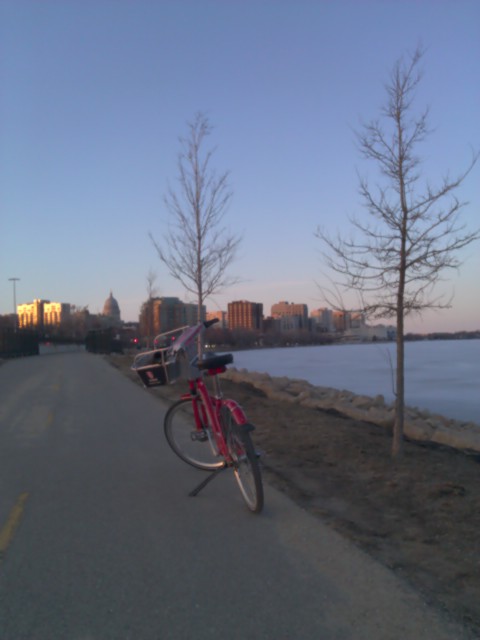
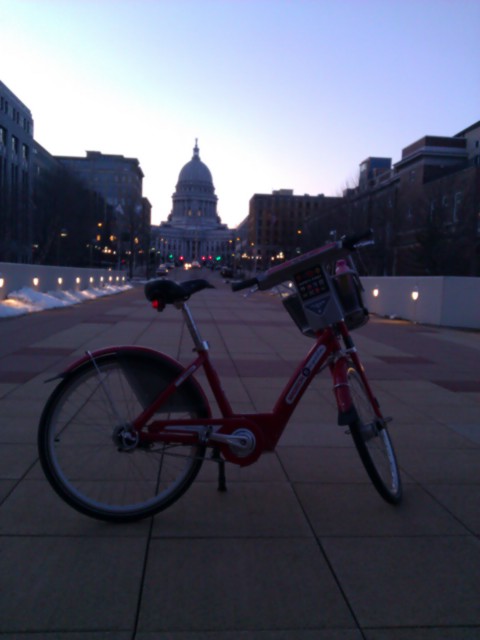
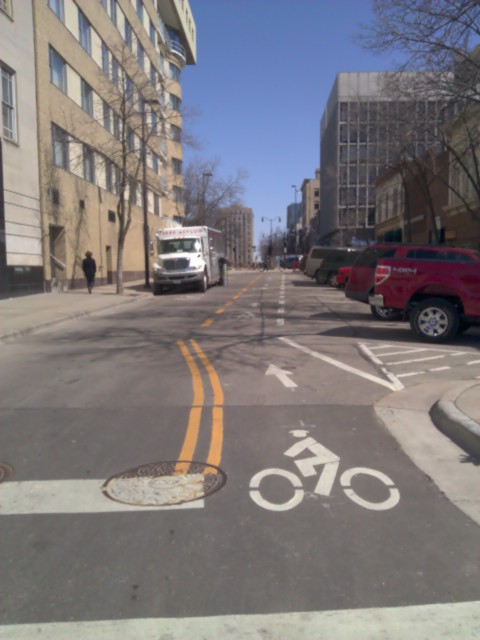
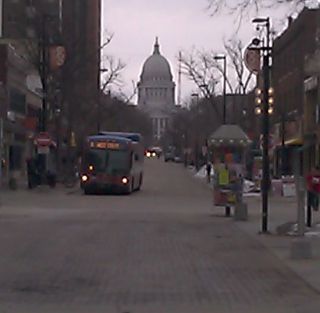
But I guess what it truly means to be a bike friendly city is that bikes are taken seriously as intended users of all streets in all stages of planning, design and construction. That means even very wide arterial streets are striped with wide bike lanes. One great setup is on University Ave along edge of the University of Wisconsin, a design which nicely accommodates all modes (though with too many car lanes) while purposely avoiding the conflict created when bikes and buses have to cross paths (top left). In the other direction a special left turn pocket (bottom left) puts you into a center bike lane (top middle) which continues straight into a contraflow protected bike lane (top right) while motor vehicles traffic curves to the right. Very wide bike lanes in Capitol Hill (bottom center) and E Washington Ave (bottom right) keep you out of the door zone even when plowed snow takes up some room.
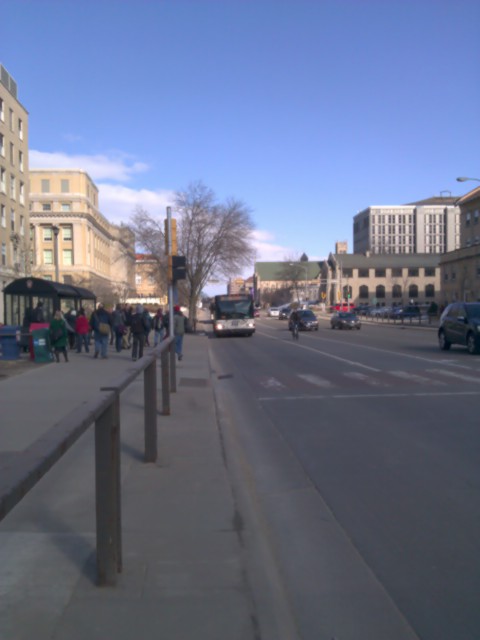

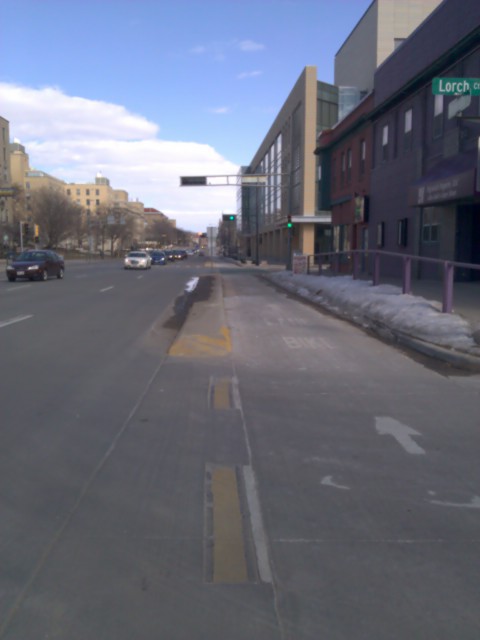
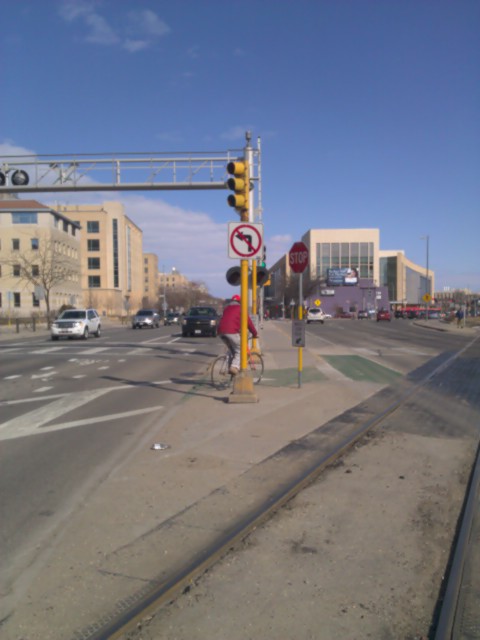
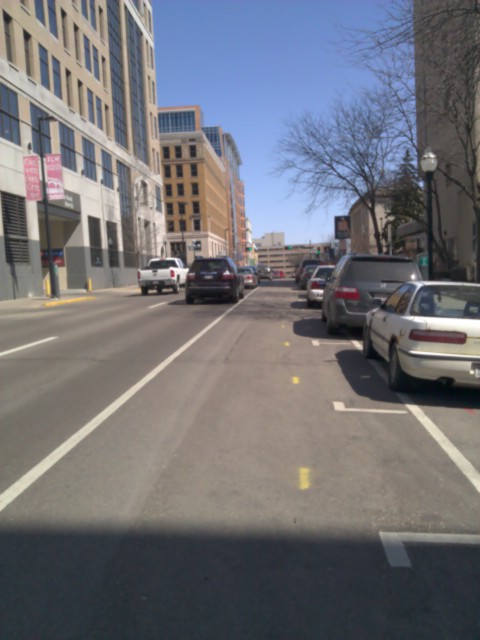
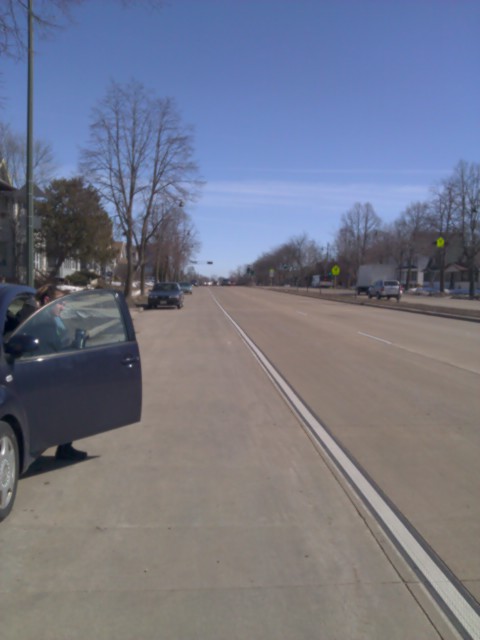
It also means that all bike routes are kept clear of snow and ice. While the number of bicyclists drops in the cold Wisconsin winters, there is still a steady stream of bikes on most corridors. (That may sound obvious, but far too many cities claim to support biking only to use bike lanes as places to pile snow all winter).
It’s not just the abundance of standard bicycle facilities. Madison has installed a number of excellent infrastructure that you won’t find in a traffic engineer’s toolkit. It’s also the way in which these facilities are treated, often with few or no stop signs and with special treatments made to conflict points such as intersections and non-standard situations.
As a city becomes more bike friendly, more people try getting around by bike, which gives biking a legitimacy that it doesn’t have in most places. Car driver behavior is noticeably better because many drivers also bike sometimes or at least have friends who bike. I’ve seen many people hauling trailers and at least a handful of children riding their own bikes in the street.
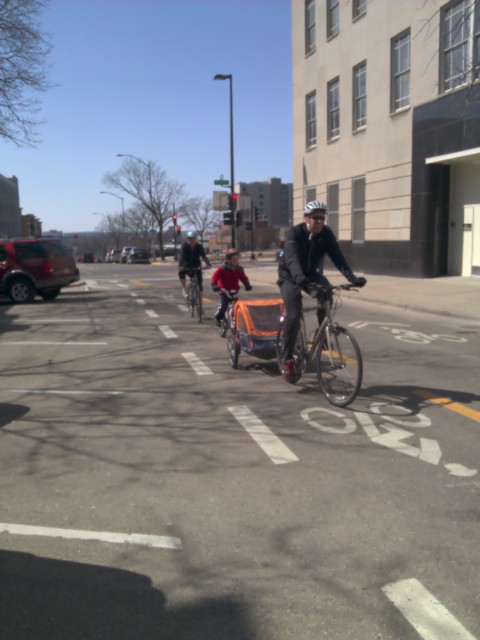
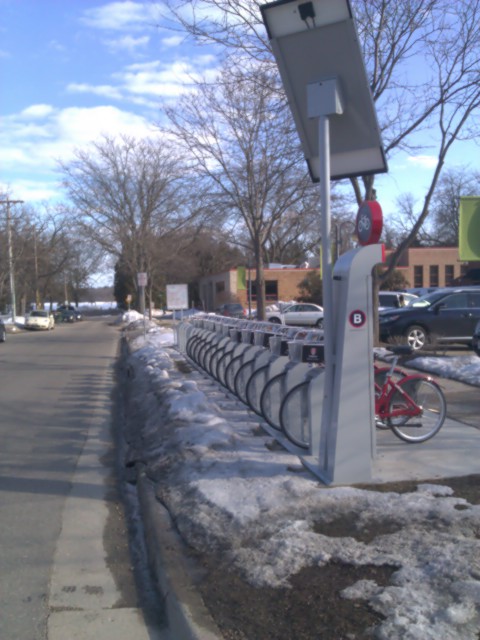
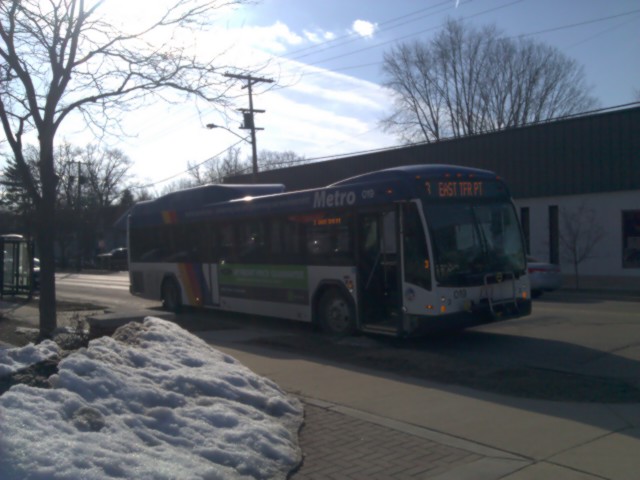
It’s important not to forget the bus system, Madison Metro Transit (which I’ll be posting about soon). Aside from bike racks, bus drivers receive extensive training on interacting with bicyclists in different environments and must ride bikes in traffic situations so they can fully understand the other perspective. It makes a big difference when you don’t have to worry about whether that large approaching vehicle is about to squeeze you into the curb.
A few opportunities remain, such as directional signage and improving the condition of railroad tracks at grade crossings, but overall I had a wonderful time as Madison has a relaxed pace of life and is easy to getting around.